Export WooCommerce Customer Data to CSV
If you’re running a WooCommerce store, there will come a time when you need to export your customers – maybe to move them to another site, import them into your email platform, or simply analyze them in a spreadsheet. In this guide, we’ll show you how to export WooCommerce customers and their data to CSV or Excel using the Users Insights plugin.
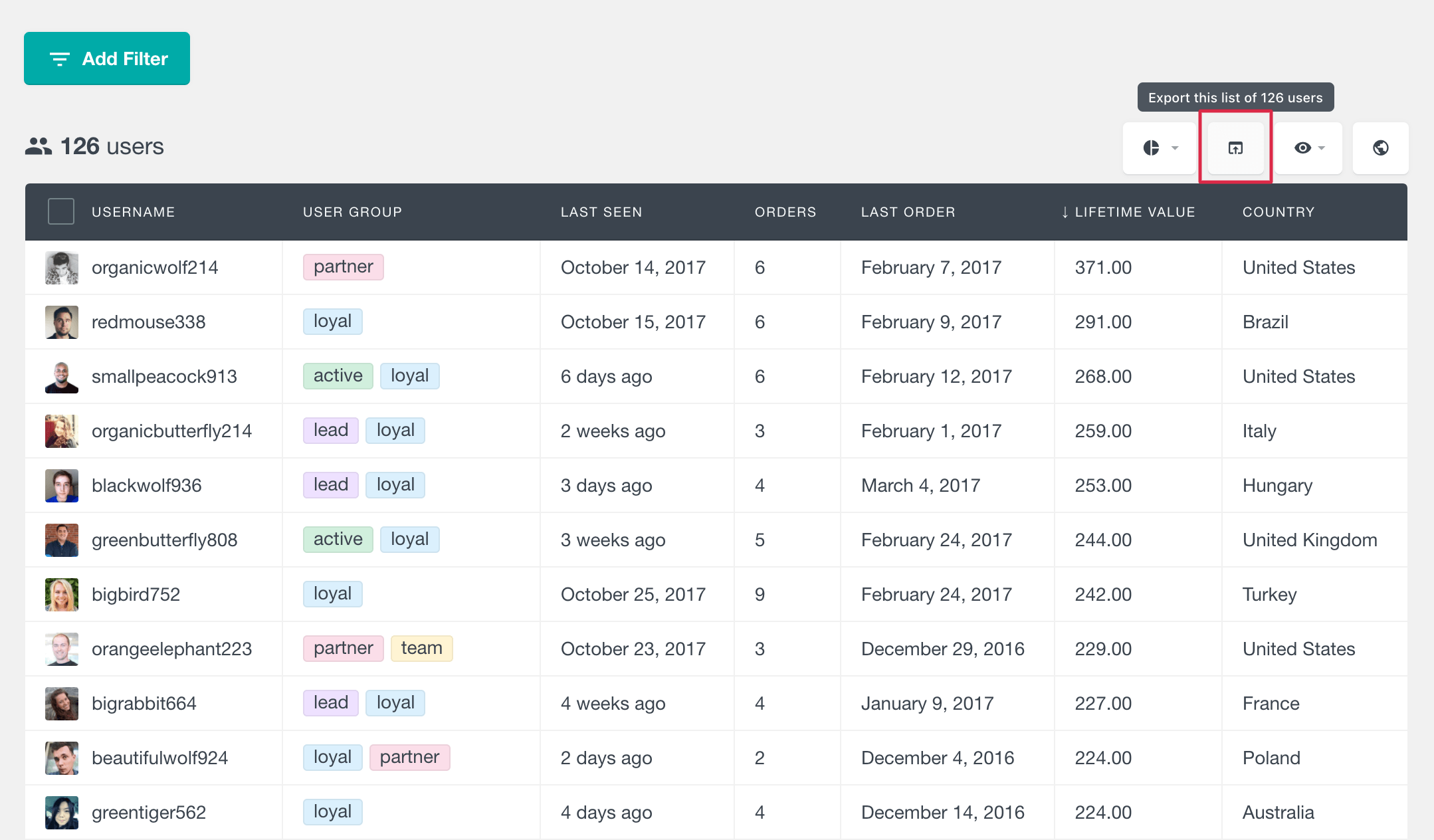
Unlike the limited default WooCommerce export options, Users Insights lets you filter, segment, and export exactly the customers you need – complete with their order history, lifetime value, and custom fields.
Why You Need a Plugin to Export WooCommerce Customers
WooCommerce doesn’t provide a flexible built-in way to export your customer list. The native export tool can only create an XML file that’s meant for migrating entire sites, not for working with specific customer data.
If you only need to export certain customers, specific fields (like emails or countries), or you want the data in CSV format for email campaigns or reporting — you’ll need a plugin like Users Insights.
With Users Insights, you can:
- Export WooCommerce customers to CSV or Excel
- Filter customers by location, number of orders, or products purchased
- Export only emails for email marketing
- Include custom user meta like billing and shipping addresses
- Export WooCommerce Memberships and Subscriptions data
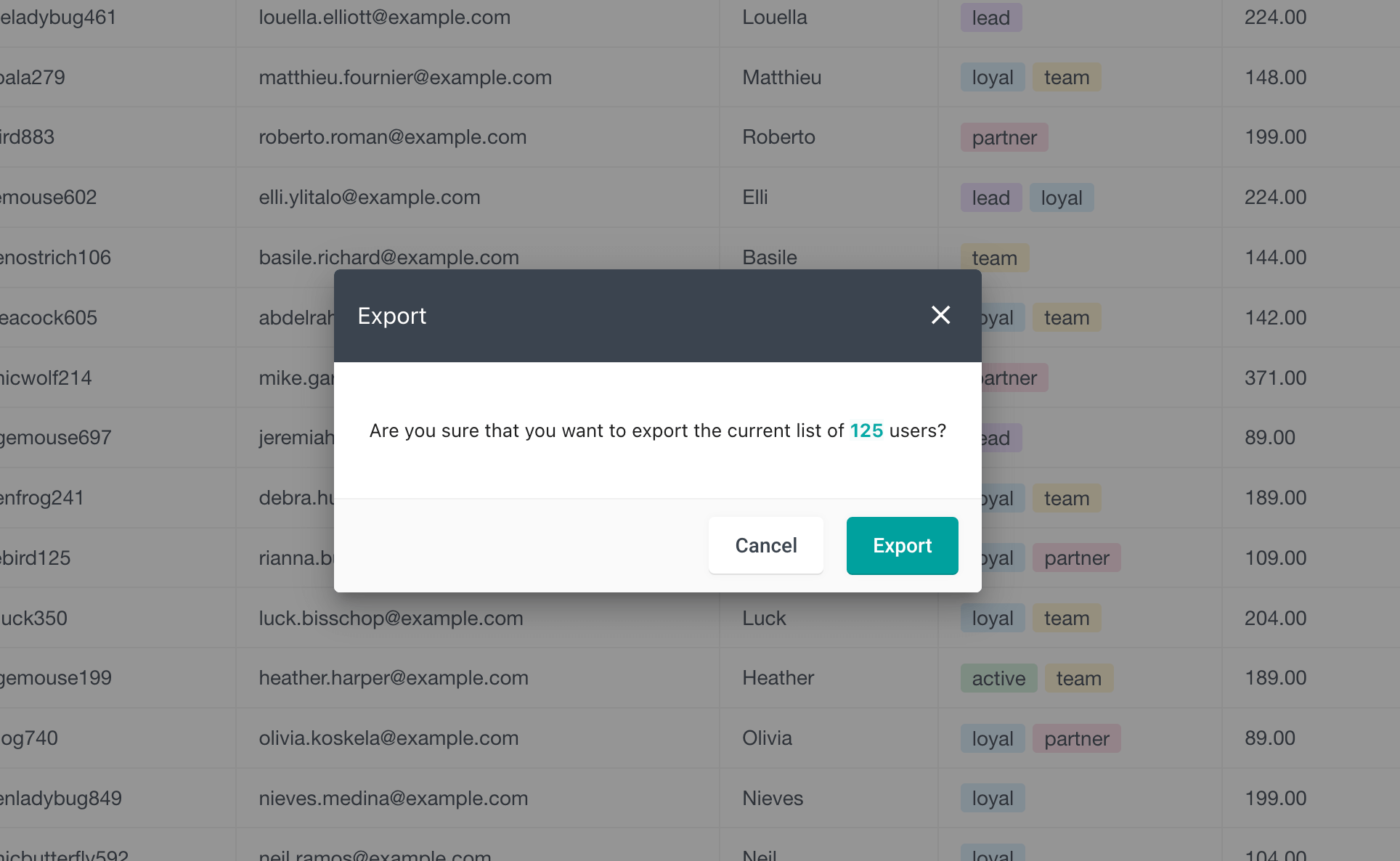
How to Export Customers from WooCommerce (Step by Step)
- Install and activate the Users Insights plugin.
Once installed, navigate to Users Insights → Export and click the export button in your WordPress dashboard. - Apply filters or select a saved segment.
You can export all customers or apply filters (for example: customers from the U.S., repeat buyers, or customers who haven’t ordered in 60 days). - Select the fields you want to include.
You can show or hide columns like name, email, order count, lifetime value, or custom meta fields. - Click “Export Data”.
The plugin will generate a CSV file containing your selected customer data. You can open this file in Excel or Google Sheets.
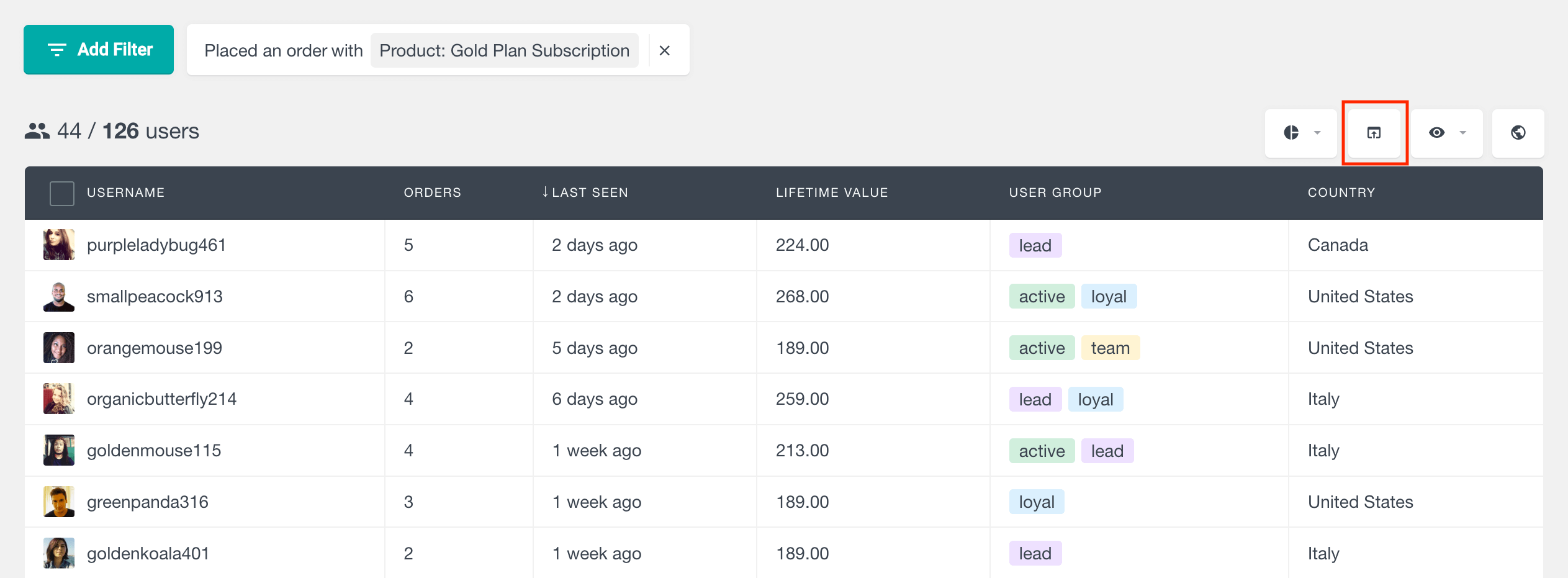
Export Specific Customer Lists from WooCommerce
Users Insights allows you to create detailed and fully customized customer exports using its smart filtering system. Instead of exporting all customers at once, you can define precise conditions to extract exactly the segments you need.
You can filter by almost any available field, including order count, order value, products purchased, billing country, registration date, last seen activity, and even custom user meta fields. This means you can easily generate highly specific customer lists that serve a particular goal, such as marketing campaigns, customer retention analysis, or migration.
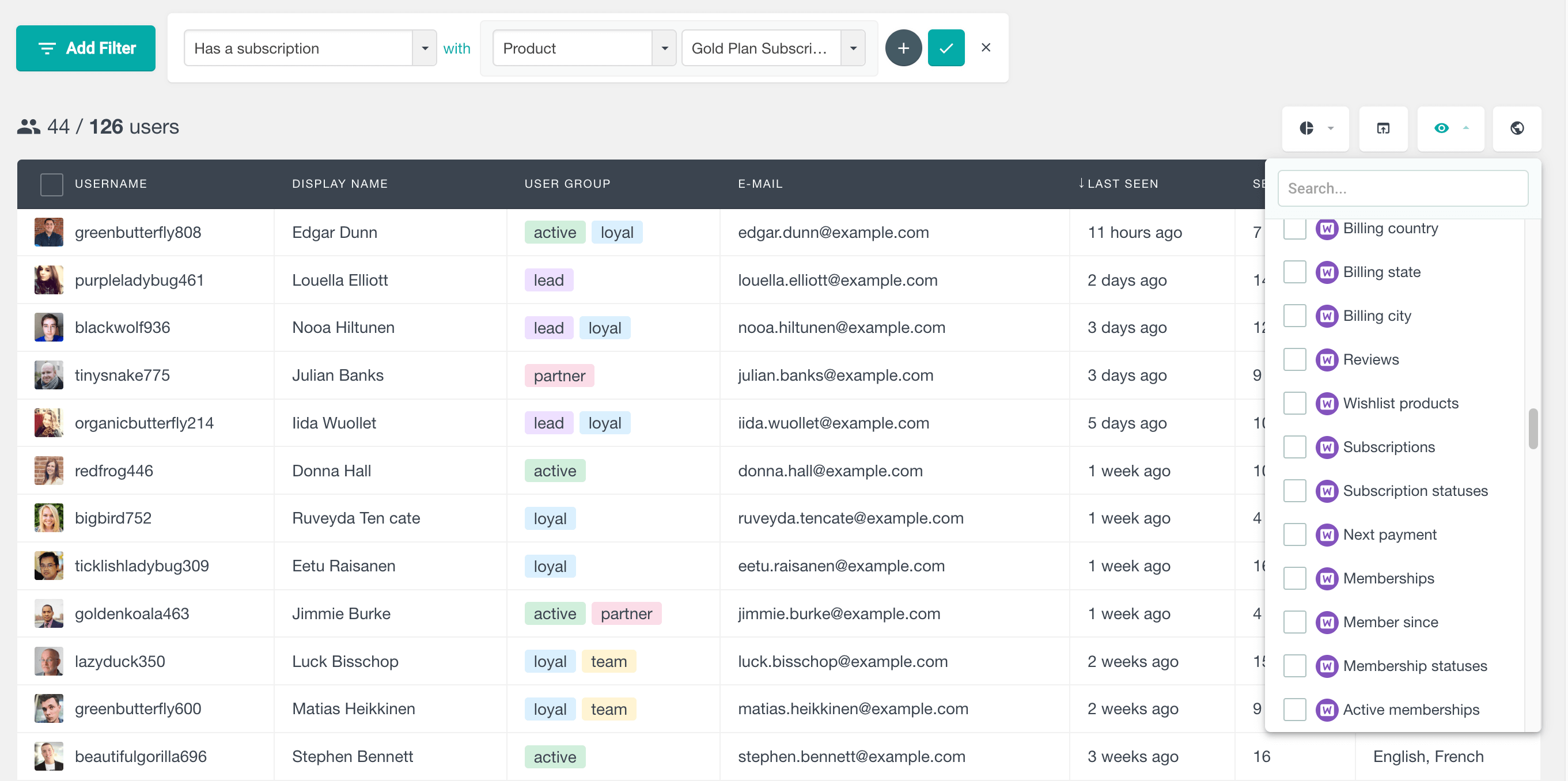
Here are just a few examples of what you can do:
- Export customers who haven’t been online or made a purchase in the last 60 days for re-engagement campaigns.
- Export customers from a specific country or region with a lifetime value above $100.
- Export customers who have purchased a certain product but not another (great for product recommendations or cross-selling).
- Export your top repeat buyers to create VIP segments.
- Export customers filtered by order status, such as pending or refunded orders.
- Combine filters like “Membership active” and “Subscription renewal next week” to prepare targeted communication lists.
Each filter can be combined with others using logical AND conditions, allowing you to build complex queries with ease. Once you apply your filters, the customer list on the Users Insights table automatically updates to show only the matching customers. From there, you can instantly export the list to CSV or Excel, ensuring that the exported file reflects exactly the same data displayed in your dashboard.
You can save your frequently used filters as Segments, so next time you can export that specific group of customers with a single click. This makes it easy to create recurring exports — for example, exporting all customers who purchased within the last month or all new sign-ups for your newsletter.
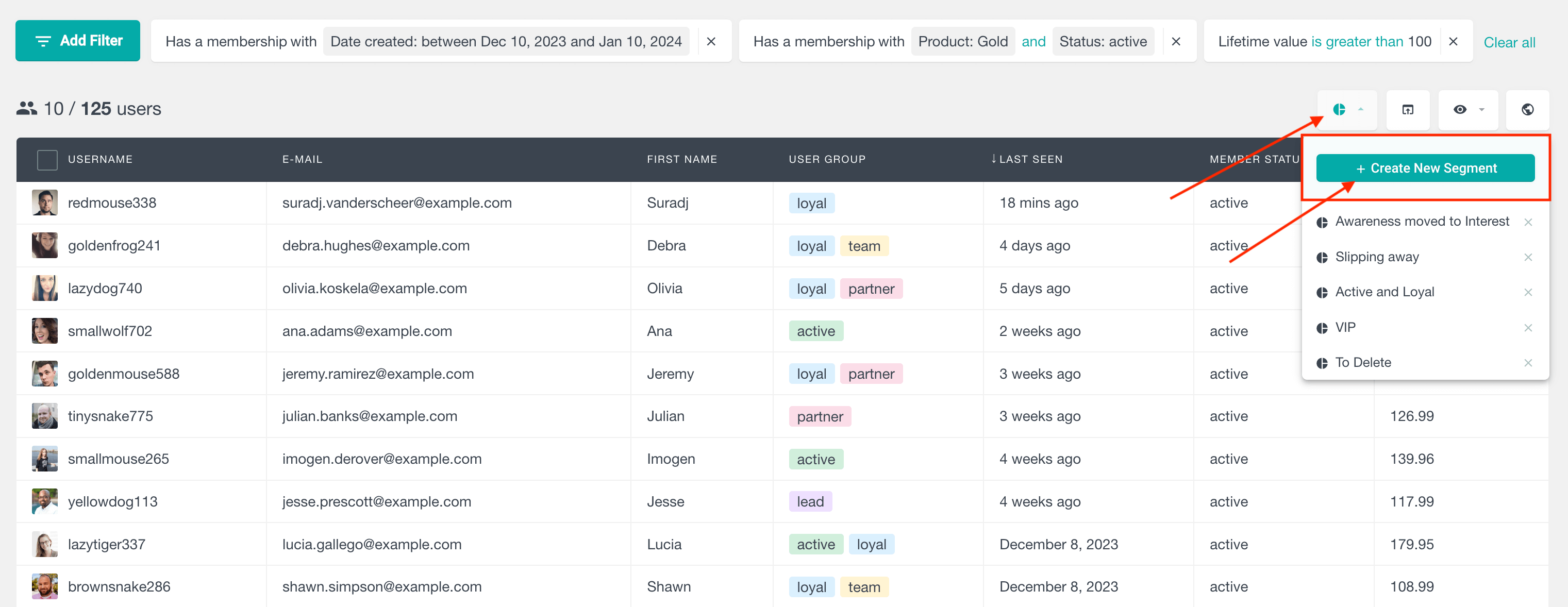
In short, the custom export functionality turns Users Insights into a powerful WooCommerce customer data management tool. Whether you need to extract simple email lists or complex behavioral segments, it ensures that your exported customer data is accurate, targeted, and ready to use for marketing, analytics, or integration with other tools.
In most cases, the reason why you need to create an export of your customer data is so that you can import this data into another system.
How to export all WooCommerce customer data
To export customer data from WooCommerce using the Users Insights plugin, you can follow these steps:
- Install and activate the Users Insights plugin.
- Navigate to the Users Insights custom export feature and select the fields you want to export.
- Filter the WordPress Users or WooCommerce customers to export or choose from already segmented lists.
- Click on the Export Data button to run the export
- Download the data to a CSV file.

First, let’s see how to export all customer info from WooCommerce simultaneously. If you click on the export button from the menu, a prompt dialog will show up and ask you if you are sure that you want to export all the WooCommerce customer data and information. If this is what you want, you can confirm your export. This will start the generation and download the WooCommerce customer list and all of the customer data included in the export file in a CSV format on your computer:
Once the CSV file is generated and downloaded to your computer, you can open it. The file will look like this:
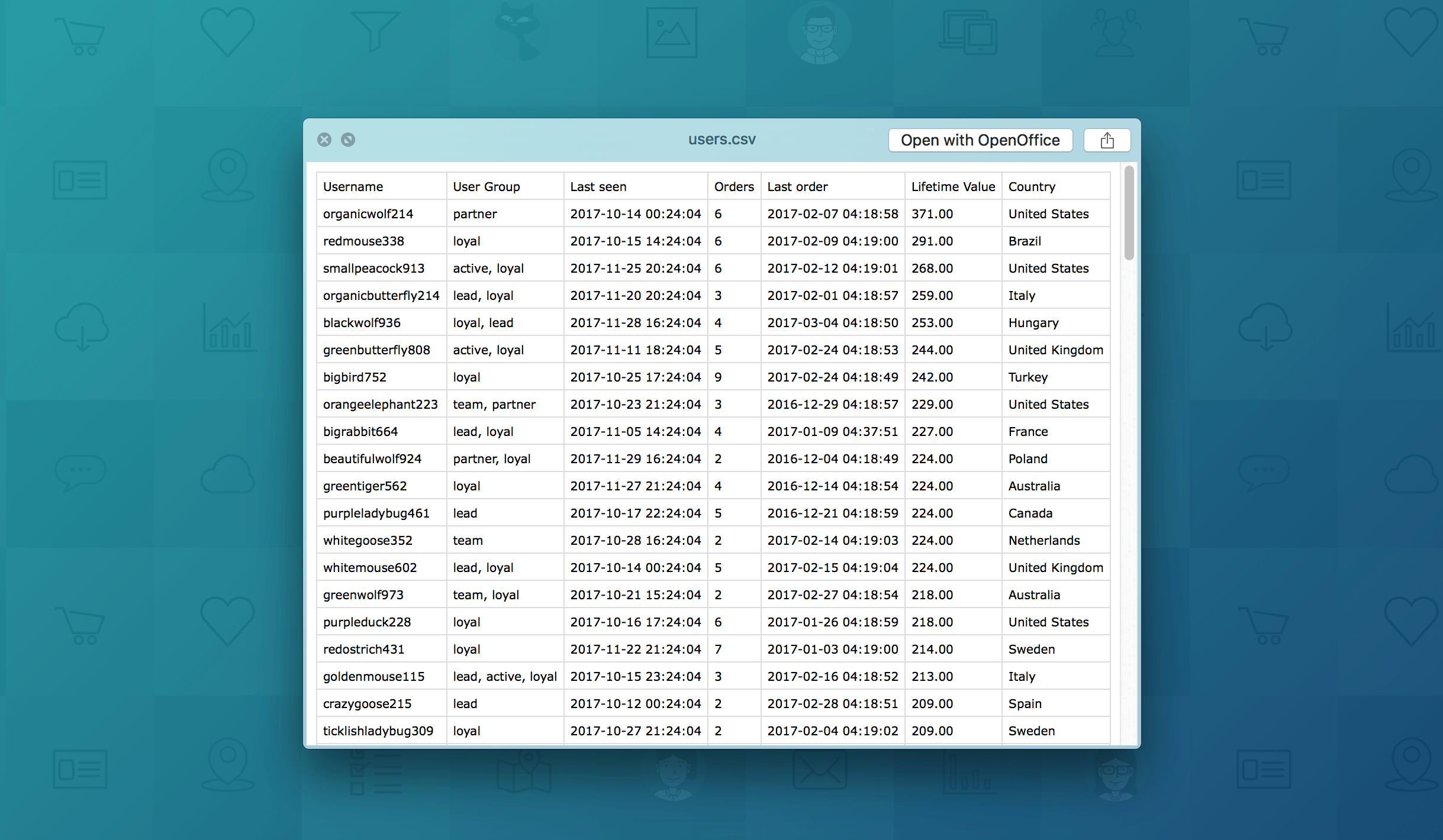
Customizing the customer information and fields to be included
As you can see from the downloaded file, the fields in the exported file are the same as the fields in the Users Insights table. Users Insights will export only the fields shown in your customer list. So, if there are some fields that you want to be included in the export, you have to make them visible on the Users Insights table before you do the export. You can show and hide fields from the “Eye” menu on the table.
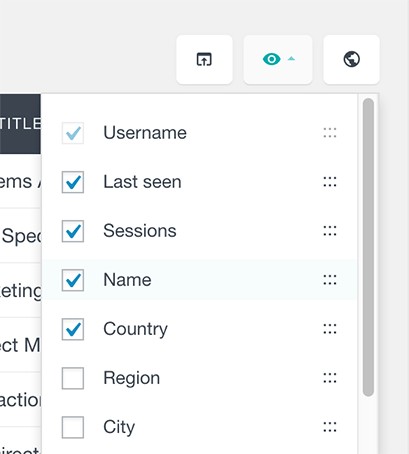
From this section, you can also change the order in which the columns will be exported by dragging and dropping them to different positions.
Creating custom WooCommerce customer exports
Customizing the sorting order of the export file
You might have also noticed that the data in the exported file is in the same sorting order as in our Users Insights table. If you want the exported file sorted by a specific column, ensure your Users Insights list is sorted similarly before exporting. You can change the sorting order of the customer list by clicking on the column title you would like to sort by.
How to export a custom customer list from WooCommerce
If you want to export only specific customers from your customer list, combine the Users Insights smart filters with the export functionality. All you need to do is apply any filter to the user table and then click on the export button while the filter is applied. Users Insights will export only the customers listed on the Users Insights table. Let’s say you want to export all the customers who haven’t been online in the last 60 days, are from the United States, and have a lifetime value larger than $100. You can easily do this by simply combining the filter “Last seen is less than 60 days” with a second filter, “County is the United States,” and finally adding a “Lifetime value is bigger than” filter:
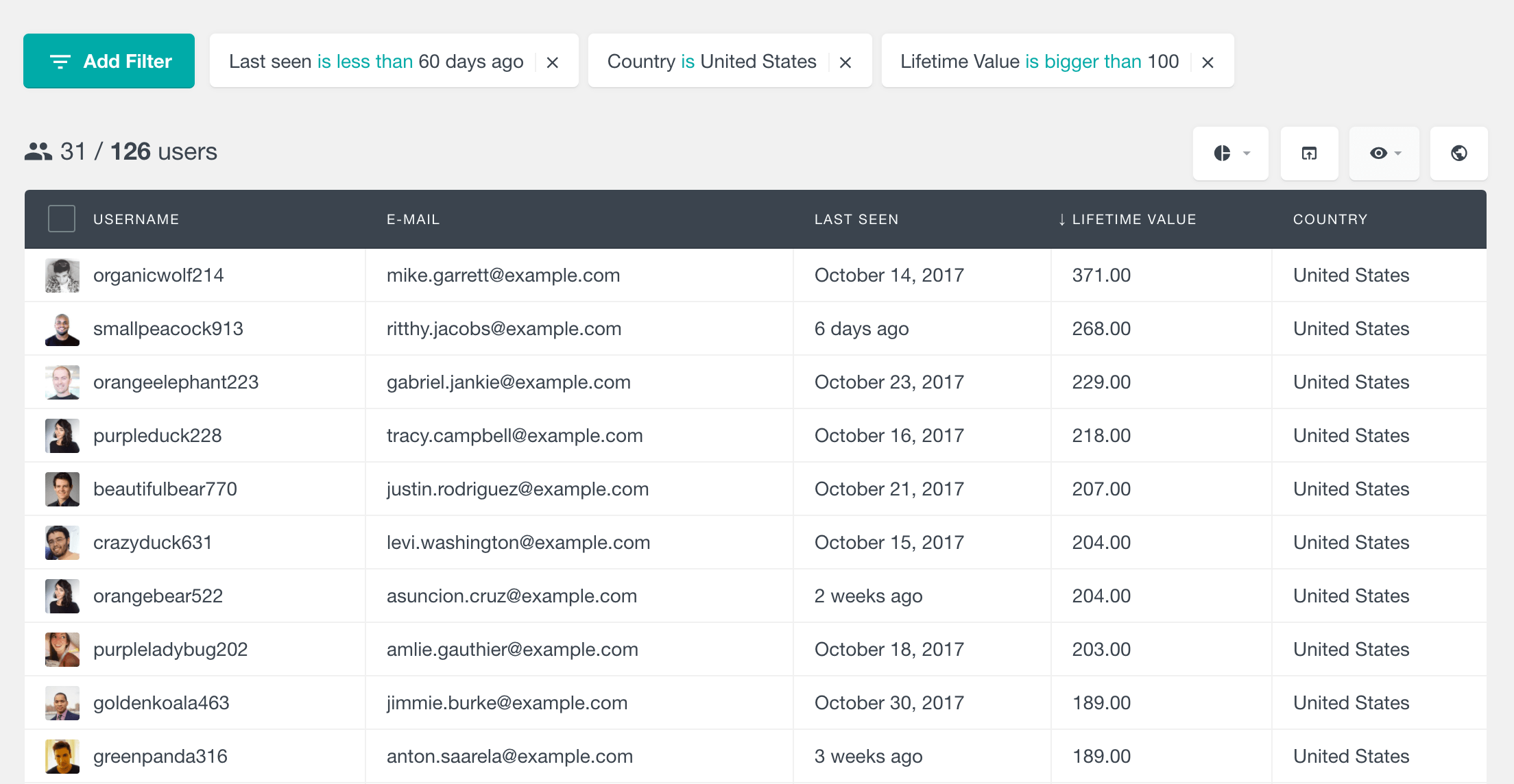
Now, if we want to export our customer list in a CSV file, we can press the export button, and we will get a CSV export file with only these customers:
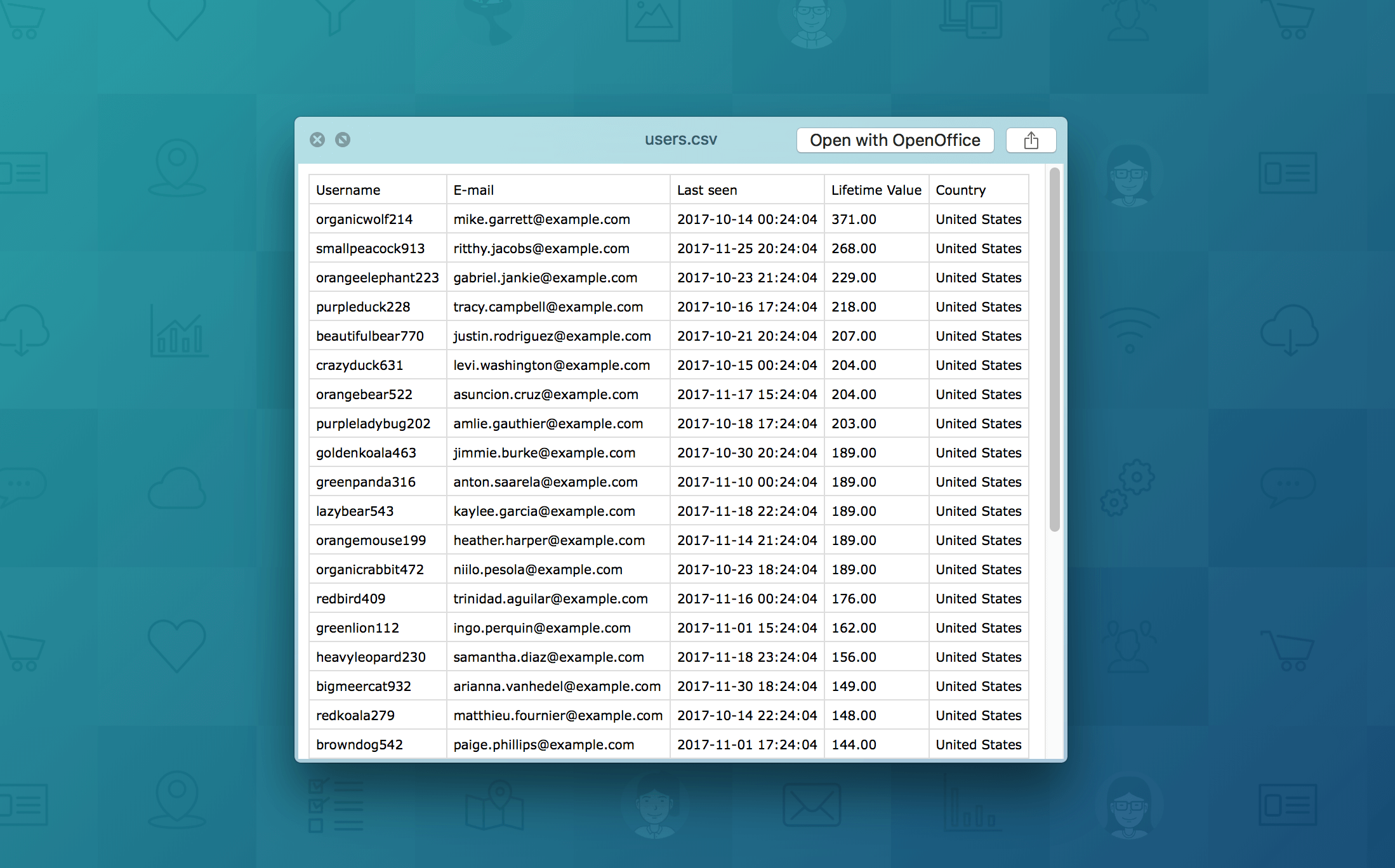
Export WooCommerce Customer Emails
Users Insights allows you to easily extract and organize WooCommerce customer emails in a way that fits your communication goals, from bulk newsletters to personalized follow-ups.
With Users Insights, you can export all customer emails at once or create highly segmented email lists based on specific filters and criteria. For instance, you can export only customers who purchased a particular product, subscribed to a certain membership, or have a high lifetime value. You can also export inactive customers who haven’t made a purchase recently, enabling you to re-engage them with targeted offers.
Each email export can include any other related information you need. For example:
- Export name and email only for basic newsletter imports.
- Add fields such as country, total spent, or last order date for more personalized campaigns.
- Combine filters like “repeat buyers” and “last seen more than 30 days ago” to identify loyal customers who might need reactivation.
To create an email export, simply hide all unnecessary columns and leave the “Name” and “Email” fields visible, then click Export Data. The resulting CSV file will contain exactly those columns and customers that meet your filters.
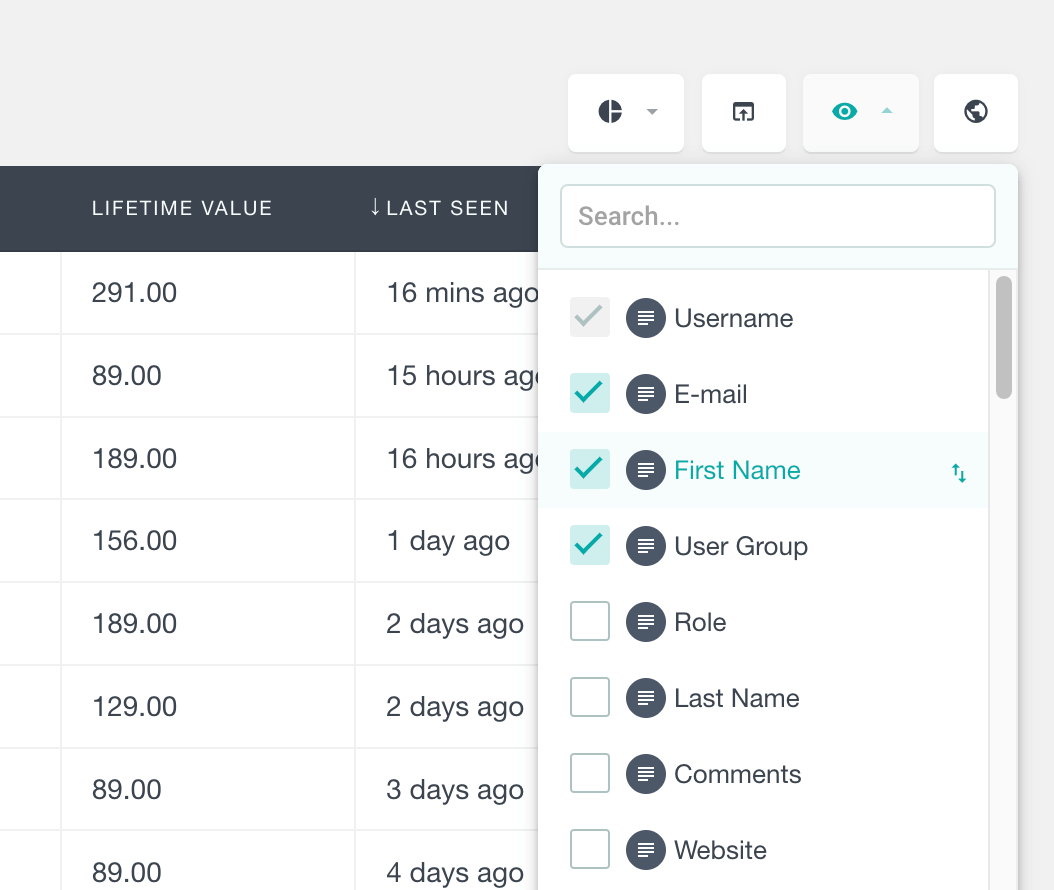
Because the export is in standard CSV format, you can directly upload it into your email marketing platform such as Mailchimp, Campaign Monitor, Klaviyo, or Sendinblue. This helps you keep your email lists clean, compliant, and up to date.
This functionality turns Users Insights into more than just an export tool, it becomes a WooCommerce customer email manager, helping you bridge the gap between your store data and your marketing system, while giving you complete control over what gets exported and how it’s used.
How to export WooCommerce custom fields and custom meta
Users Insights also supports custom fields, so you can include any WooCommerce or third-party plugin data in your exports. For example, you can add billing and shipping fields, membership levels, or custom registration fields.
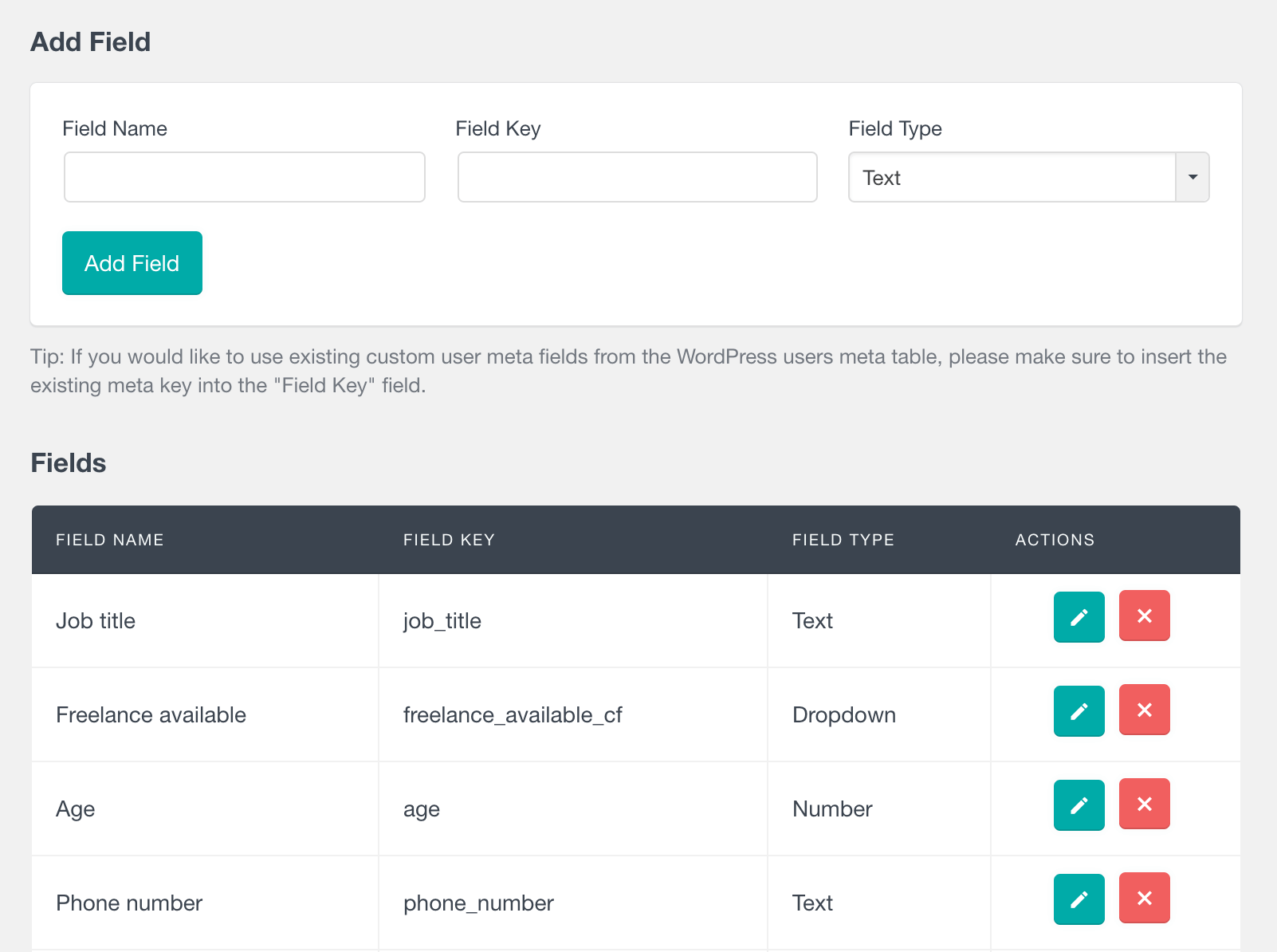
Please note that this will work only with registered customers, not guest ones. Now we have this field in our columns, we can easily add this extra meta data to your WooCommerce user’s export. To do that, ensure you have this WooCommerce column visible in the table. In our case, we’ll use the shipping data from WooCommerce (country and city).
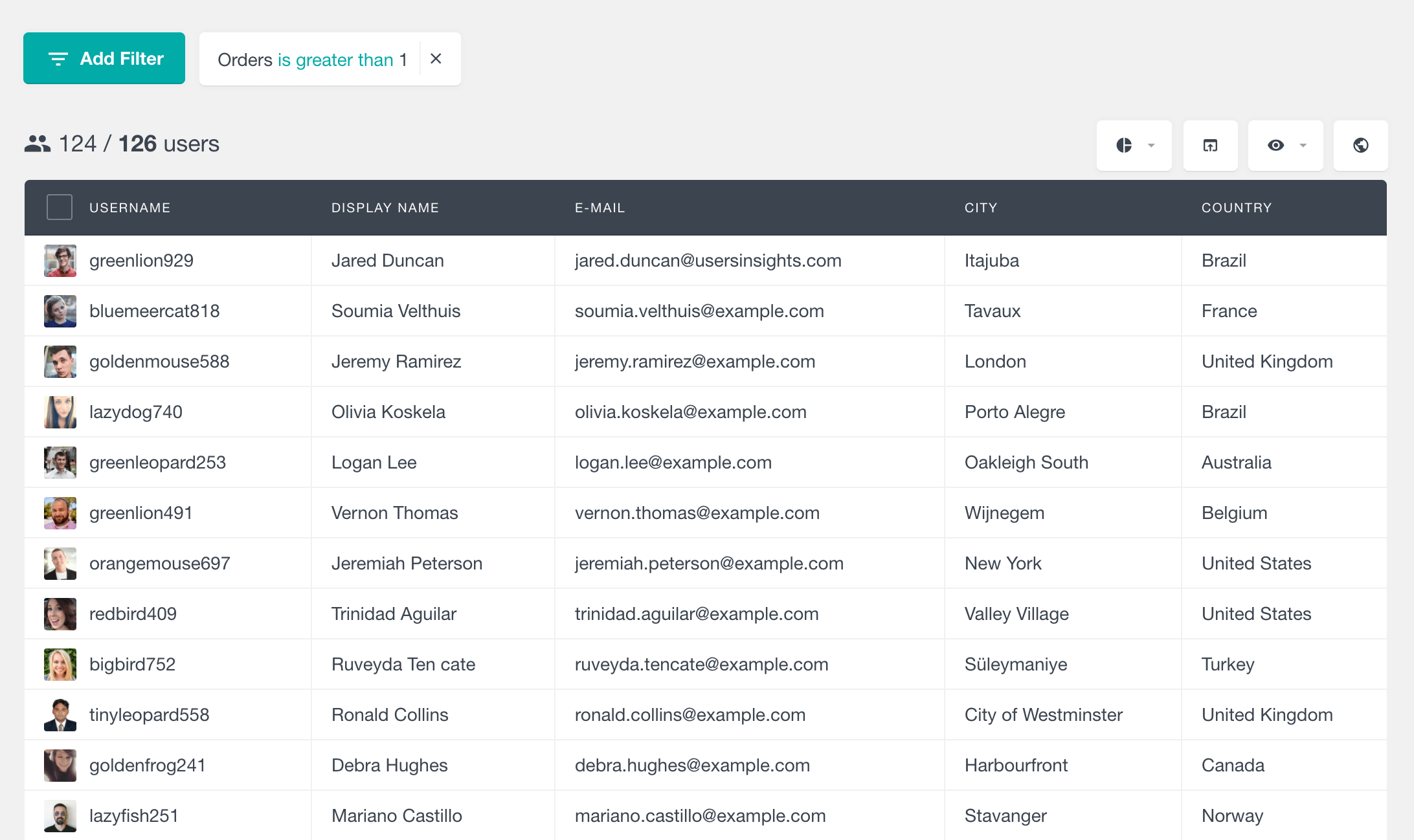
You could use the same process to create a different WooCommerce CSV export for other custom fields. We have a more detailed tutorial on exporting WooCommerce customer addresses if you want a more detailed explanation.
How to export WooCommerce customers by orders and product data
The ability to filter our customers by their order data opens up the possibility of creating custom exports of our WooCommerce customers based on their purchase data. This includes order data like the number of orders, first order data, last order data, lifetime value, and products in the wishlist. Here is a table of all the WooCommerce order data that can be included in the export file:
| WooCommerce export | WooCommerce Subscriptions export | WooCommerce Memberships export |
|---|---|---|
| Number of orders | Number of subscriptions | Number of memberships |
| Number of successful orders | Subscription statuses | Member since |
| First order | Next payment date | Membership statuses |
| Last order date | Active memberships | |
| Lifetime Value | ||
| Number of reviews | ||
| Number of products in wishlist |
For example we can export customers who have ordered specific WooCommerce products and use this data in our targeted email campaign. Or we can do the opposite and export customers who have WooCommerce orders without a specific product and recommend a related product (and maybe send them a discount coupon). Let’s see an example of all customers who have made an order with a specific product:
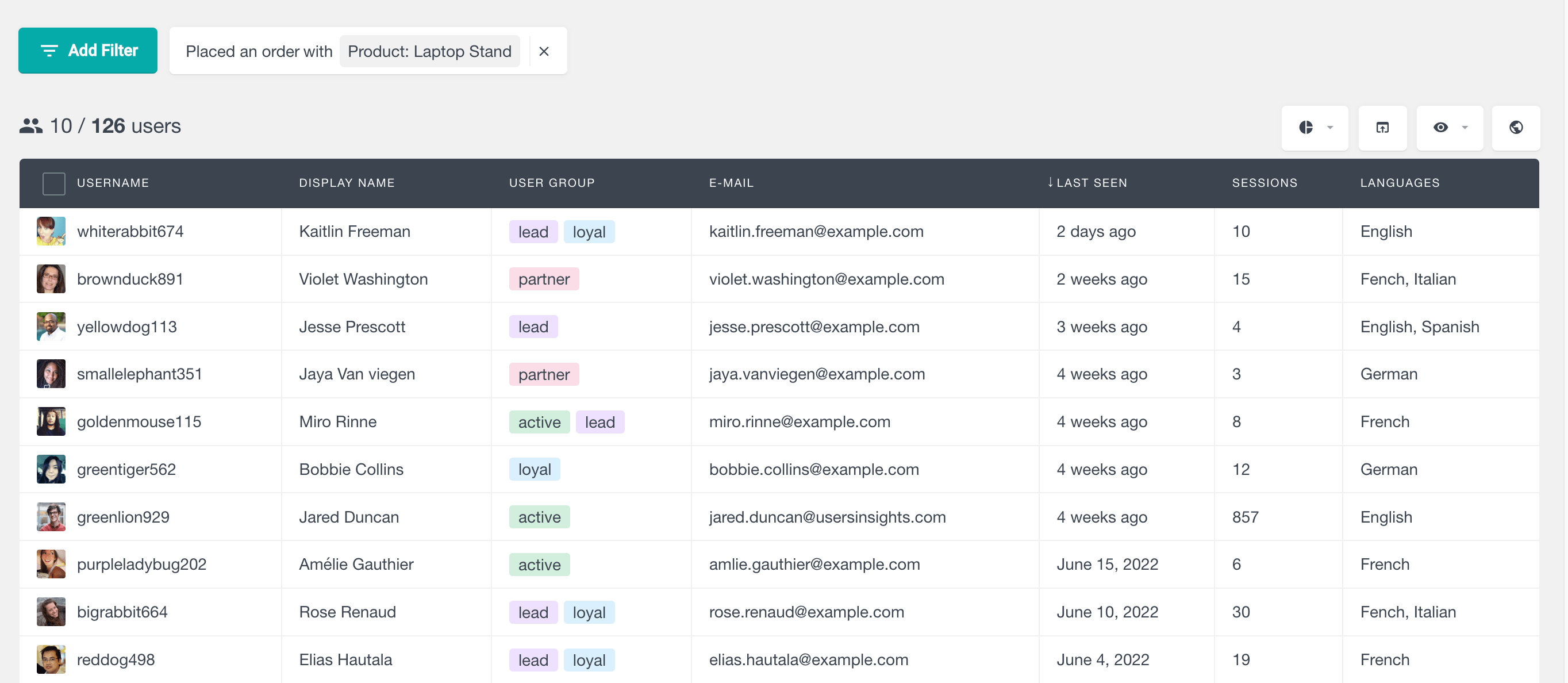
But now let’s say we have a very related product to the ordered product and that we think that it will be a create product recommendation for these customers. We can create another filter that will show us all the customers who have purchased the specific product but not the other:
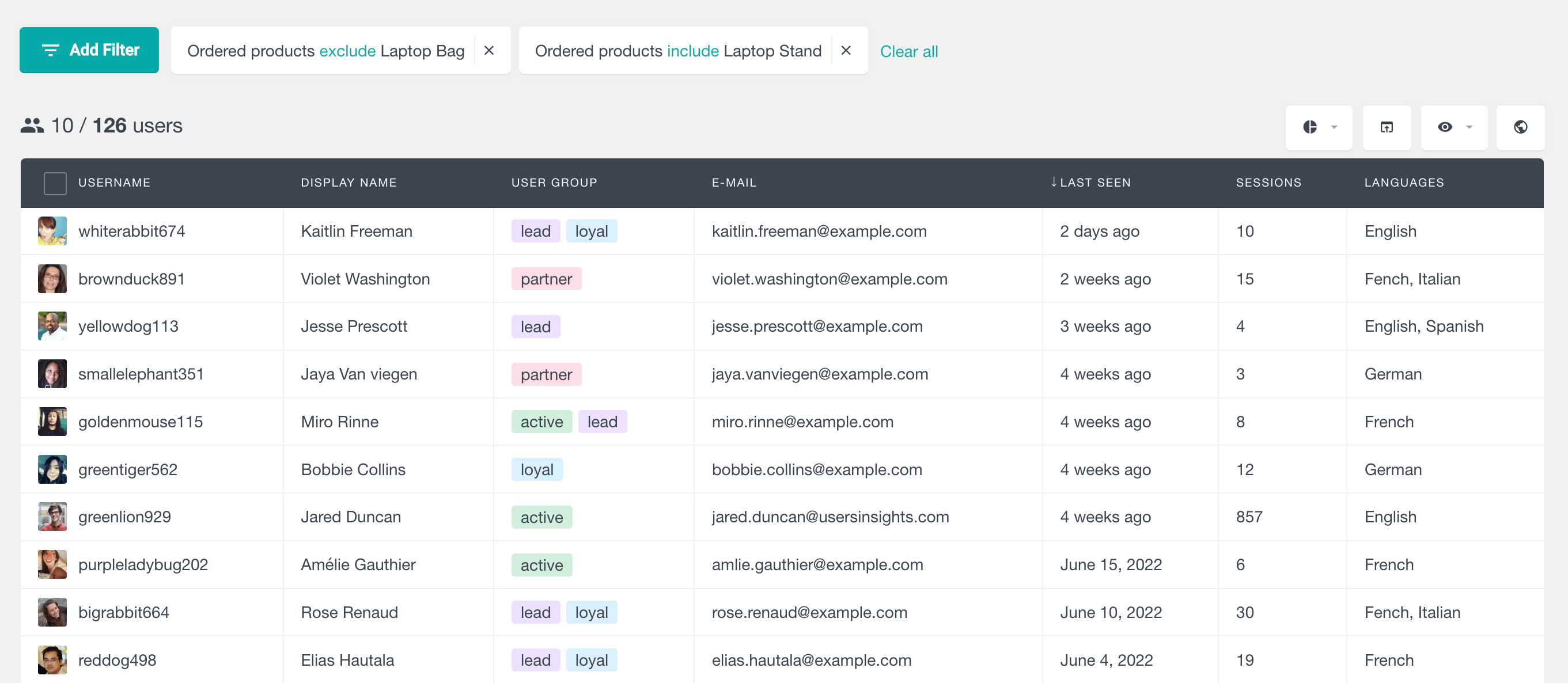
You can export WooCommerce order data if the specific order column is visible in the table. As we can see, the ability to export WooCommerce orders data and WooCommerce product data opens a lot of options and flexibility in how you can create your custom exports.
Export WooCommerce subscriptions and WooCommerce membership data
Since Users Insights comes with out-of-the-box integration for WooCommerce subscriptions and WooCommerce Memberships extensions, you can also export the data from these WooCommerce plugins. For example, you can export WooCommerce subscription data like plan subscription status, next payment date, or number of active subscriptions. Here is an example of how you can easily export WooCommerce subscribers of a specific subscription product only:

For the Membership extension, you can export data like: Number of memberships active, member since date, membership status, etc. And since all the data is in one place, you can easily export subscription data in combination with data from different plugins and custom fields.
How to export and import WooCommerce customers into CSV, Excel, and Google Sheets
All the exports you create with Users Insights are created in the CSV file. This provides considerable flexibility and portability for the exported WooCommerce data. CSV files are much like Excel or spreadsheet files but with a lot more cross-platform support. Since CSV files are standard and supported by most platforms and tools, you can easily open the export file with Microsoft Excel software or Google Sheets and Google Docs.
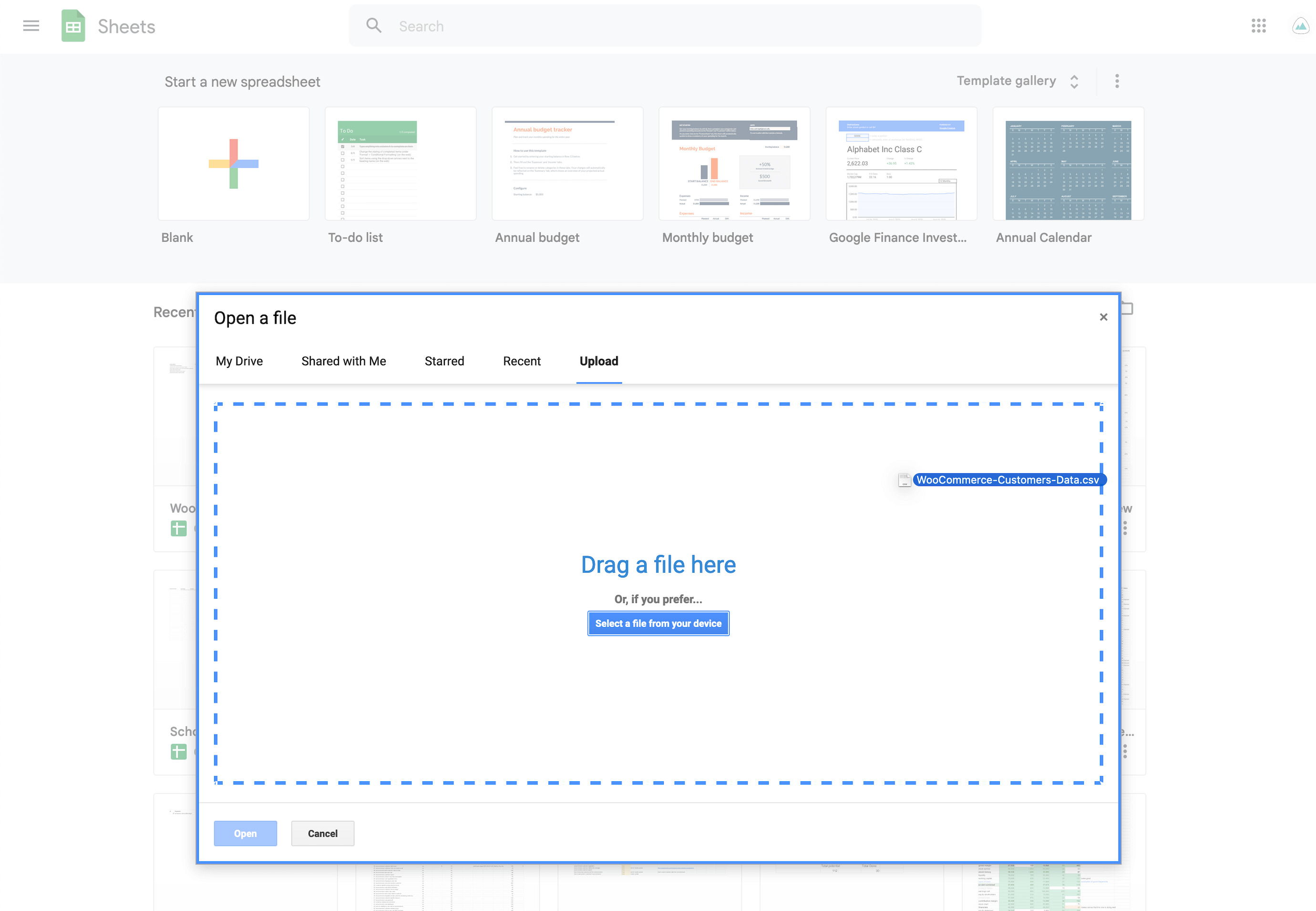
Additionally, having the data in CSV format allows you to import customers into other platforms and tools like marketing software tools or even migrating your WooCommerce users to a completely different eCommerce store.
With the Users Insights filters, you have almost unlimited options to segment your customer list. For example, you can easily export only the customers who have purchased a certain product, export the list of customers with the biggest number of orders, or export WooCommerce users and customers to CSV based on order status, etc. You can also take advantage of the custom segments feature and auto export customers in CSV by having the filters saved as a segment.
Here is a short video showing how you can use the custom exports feature of Users Insights to create your WooCommerce customer exports that contain only the information that you need:
As you can see, the custom export functionality of the Users Insights plugin, in combination with the rest of the plugin features and modules, can be a powerful tool for creating custom exports of your WooCommerce customer data. We hope this article was helpful, and now you can create custom WooCommerce customer exports.
Why Choose Users Insights as Your WooCommerce Customer Export Plugin
With Users Insights, exporting WooCommerce customers is not just about downloading data — it’s about understanding and using your customer insights effectively.
| Feature | Users Insights | Default WooCommerce | Other Plugins |
|---|---|---|---|
| Export customers to CSV/Excel | ✅ | ⚠️ XML only | ✅ |
| Filter by orders, products, country | ✅ | ❌ | ⚠️ |
| Export emails only | ✅ | ❌ | ✅ |
| Include customer order history | ✅ | ❌ | ❌ |
| Include custom fields | ✅ | ❌ | ⚠️ |
| Integrates with Memberships & Subscriptions | ✅ | ❌ | ⚠️ |
| Built-in customer reports | ✅ | ❌ | ❌ |
